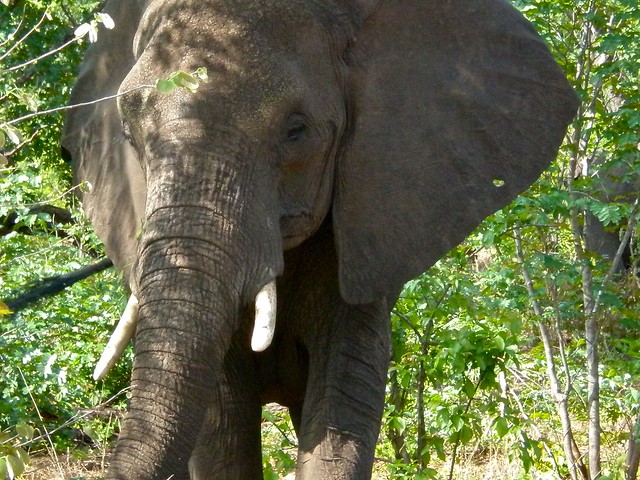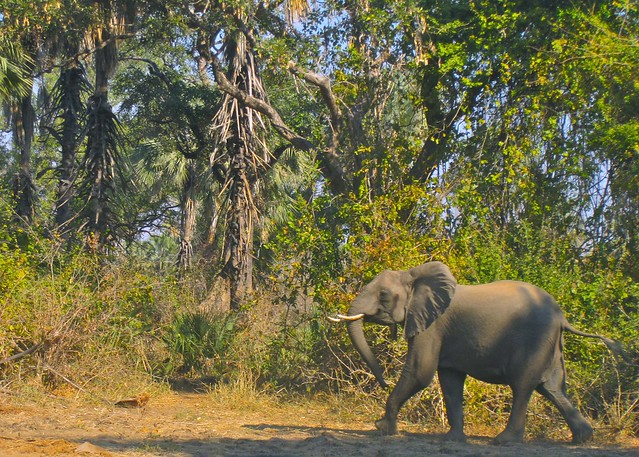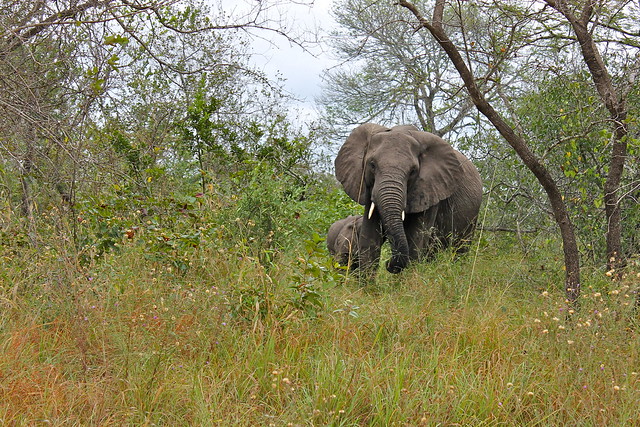World Elephant Day
/
I still remember my first wild elephant encounter like it was yesterday. You might think I used the camera zoom in the photo above, but I didn't - this was literally how close my seat in the vehicle came to the largest land mammal on Earth. So, in order to celebrate this special and unique animal today, I thought it would be a great idea to share a few of the best places to view them in southern Africa.

I think there is no better place to view elephants than Chobe. This park has a massive concentration of elephants (around 50,000), and in the Linyanti Marsh (the Northwest corner), I've always spotted several herds. The best time to be in the park is late August during high-water, and on through to the dry season (as seen above, which ends when the rains arrive around early to mid-November). I recommend taking a sunset cruise (bookable through most hotels in Kasane), so you can experience the unforgettable sight of a herd walking down to the water's edge for a drink.

Lower Zambezi National Park, Zambia
Everything about this park was 'wild', so it came as no surprise that every elephant encounter here was nothing like the ones I'd experienced previously in Chobe. Our car was mock-charged twice despite keeping safe distances, and this is because a lot of the bull elephants (males) we came across were in musth. If a bull is in musth, you'll see darkish marks on either side of his head (near his ears, see above), and then you will know to be particularly careful to keep a good distance between him and your car. Quite simply, this is a natural signal that this elephant has loads of testosterone surging through his body. Just like you wouldn't pick a fight with a body builder on steroids, you don't want to mess with an elephant in musth.

Kruger National Park, South Africa
In this park, I rarely saw a large herd gathered together, but that was probably just a result of my timing. I came across several mother and calf duos, just like the one I've captured in the photo above. While on a self-drive, you will want to be especially careful around female animals and their young because mothers can be protective. While you're busy photographing them on the left, another member of the herd could approach from your right, and your goal is to stay a safe distance from the group as a whole. If an elephants is agitated, you'll notice it. They will exhibit some warning signs: shaking their head, trumpeting, even mock-charging your vehicle. I've read countless articles and reports about elephants flipping cars with tourists inside - a safari ruined, simply because the passengers have ignored the animal's warning signs.

Photography Tips
- Even when they're breaking trees and using them as toothpicks, I find elephants can still be very quiet creatures. Their thick grey skin blends in well with its surroundings, especially during a cloudy, rainy day when the bush is green and lush. This is just another reason to visit during the dry season, when they stand out in contrast against reddish brown dirt and bare trees.
- Look for large clumps of elephant poo in the road. You'll be able to tell the fresh piles because there will be flies around it. Broken or bent trees along the sides of the road are also clues that elephants have passed by. Elephants drink around 50 gallons of water per day, so a watering hole or river is also a likely place to view them.
- Photograph them from all angles, and not just head-on. One of my favorite shots is the one above, taken in Chobe.
- Zoom in for more detailed shots of their unique features, and zoom out to get a feel for their awesome size in comparison to their surroundings. Cars are ugly, but they also put the size of the elephant into perspective (see below).
One final word...
Never buy ivory products! Yes, there are hundreds of thousands of elephants in Africa, however, they're considered 'vulnerable' with regards to ICUN's conservation status no thanks to an increase in poaching in recent years. With a gestation period of 22 months, elephants are slow to reproduce and replenish those lost to poaching. The demand for ivory primarily comes from the East (China), because ivory is used in jewelry, while others believe the myth it has medicinal purposes. By better training and equipping game rangers to combat poachers on the ground, demonstrating a zero-tolerance policy on wildlife trafficking, and pushing our neighbors in Asia to curb their demand, these creatures have a fighting chance. For more information on elephants, poaching, and the reason for today's celebration, check out the World Elephant Day website.









































